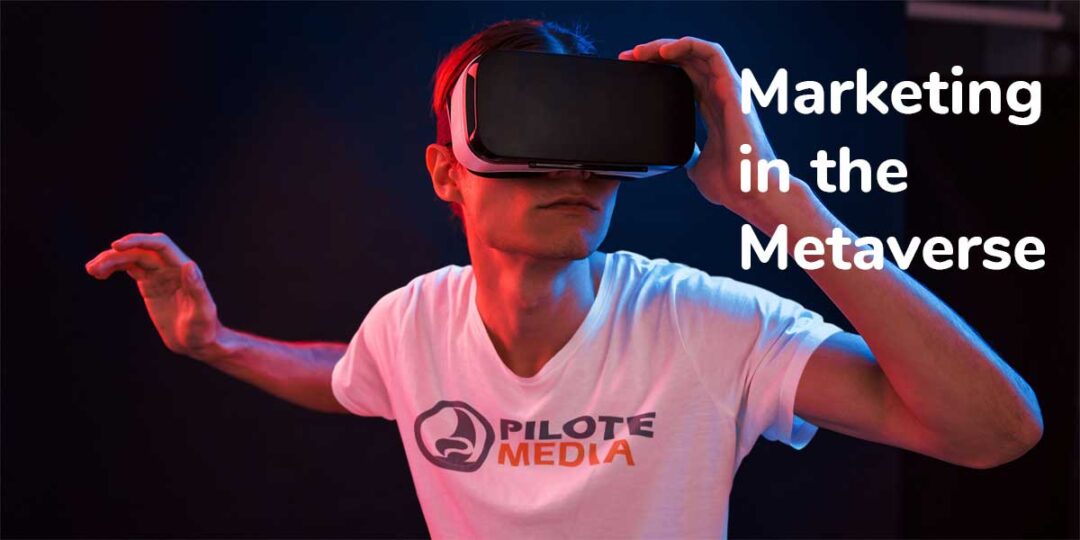Facebook has changed its name to Meta, partly to divert attention from their questionable practises, and partly to convince us that we want to live in a fantasy world – the Metaverse.
Basically this is the opposite of limiting screen-time. This is a bet that people will live a large part of their lives in a digital, virtual reality style existence. The full vision of the metaverse won’t become a reality for nearly a decade, but that wont stop companies like Meta telling brands that they need to be present in the new worlds.
Advertising in the Metaverse
This isn’t new. Brands like Red Bull have been present in virtual spaces like video games for over 20 years. And the concept isn’t new either…
As people swapped reading newspapers for social media feeds the advertising dollars followed. If people spend less time in the real world and more time in a virtual world then advertising budgets will need to follow them to get a share of their attention.
However. As with all marketing, you need to understand your customers and the context of the space.
Ask the same questions that you would of any marketing platform:
Who are the people using the platform?
Let’s just say that they might not the be most well-adjusted group. These are people who would rather interact in a virtual world than the real world. The kind of people who would rather inhabit the body of a fantasy character than their own, the kind of people who would rather travel into a simulation than a foreign country. They are mostly male.
How are they using the platform?
In the current iteration of the metaverse, there are only two driving motivations. To play games and to have relationships. Like other new channels, there are norms relating to what people expect in the space. If you have ever had your gaming experience interrupted to be forced to watch a 30 second ad, you will know what I mean. Your brand may fit into this behaviour naturally – it might not! See the notes about Brand Safety below.
How many active users are there?
Participating in the metaverse is currently a relatively fringe activity. The game Fortnite has around 350 Million registered players. 96% of the world’s population do not play Fortnite. 126 Million people play Minecraft each month. So 98% of the world’s population do not play Minecraft. Roblox has 43.2 million daily active users. At any given time there are 55,000 people on Second Life, which is a lot less than those listening to the radio!
Can they be targeted? Can advertising messages be personalised?
Many of the current online worlds have a commerce-based business model. That means advertising is not the primary revenue source, which means they were not necessarily built to collect data and therefore, creating relevant messages could be difficult. How many times have you received an ad for an app you have already installed? Can you vary your campaigns based on location, language or other data? Or do you end up with an old-school TV broadcast approach?
Many of these worlds are not based on real-world ID. So, like Twitter, people can be anonymous, change their gender, their species or their beliefs. Spaces like Roblox don’t even require an email address to create an account.
Is this space right for my brand? What ‘Brand Safety’ measures are in place?
In 2005, Yahoo closed all of its chat rooms after pressure from advertisers. These rooms were unmoderated and contained some highly dubious material – not the sort of thing you want your ad positioned next to. The metaverse will be the new equivalent of the wild-west. If social media has shown us anything, its that companies who run these spaces are not very good at regulating themselves. So you need to think about your brand values. Are you okay with your brand being ‘worn’ by a character participating in gratuitous violence or abuse?
What is the call to action? How does this space fit into my customer journey?
There are some products and services that neatly fit into this brave new world of fantasy online existence. Virtual outfits and apparel for avatars is easy to understand. I’m going to a virtual nightclub, I want to look great, I grab some branded gear to wear.
Just as food delivery services and beverage companies advertise during sporting events, it may make sense to remind the user that they live in the real world and they need to eat! Which would be quite cool. Wandering down a virtual street I see an ad for my local take-away. I can make the order in the virtual world, but my curry is delivered to my real address.
What is the Return on Investment?
As with all marketing spend, the decision you have to make is where to allocate your finite budget to deliver the best results. In 2022, marketing on a podcast will probably get you a better return than positioning your brand in version 0.9 of the metaverse. Unless you are a globally recognised brand in a mature market and you are looking for any kind of growth…
Are you looking to review your Brand Strategy? Talk to us about how your brand can be positioned for today and whatever the future may look like – metaverse or not… Chat —>>




